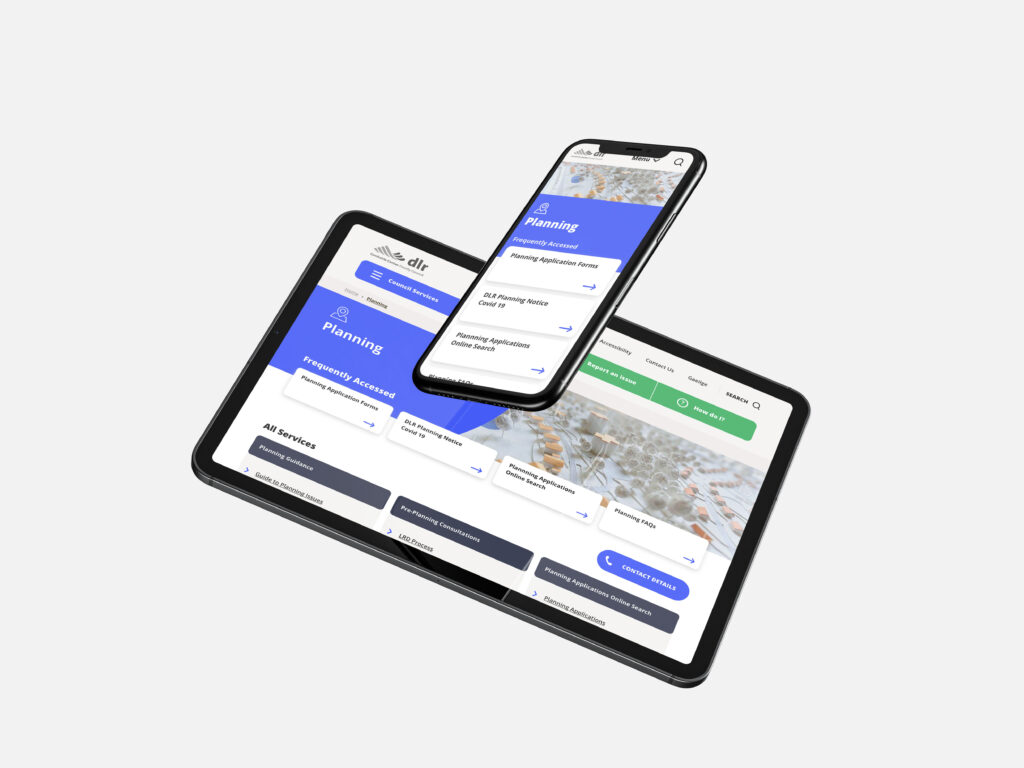Drupal is a popular content management system (CMS) that powers millions of websites around the world. With its robust features and flexibility, Drupal offers plenty of benefits for website owners, especially those running particularly content-heavy pages.
55% of web traffic is coming from mobile devices nowadays. Creating a mobile-optimised website isn’t just a nice-to-have in 2023, but a requirement. Monsoon’s recent project with Dún Laoghaire–Rathdown County Council prioritised the mobile experience to give residents quick and easy access to local news, announcements, or policies.
Our decades of expertise in building websites for a variety of clients has reinforced the importance of user experience. Your competitors are just a click away and if you don’t delight your audience, someone else will.
In this guide, we’ll walk you through the steps to create a responsive and mobile-friendly Drupal website to keep users browsing day after day.
Table of Contents
ToggleWhat is a responsive website?
A responsive website is one that can automatically adjust its layout and content to fit the size of the screen on any device. A mobile-friendly website is one that is easily accessible and legible on mobile devices. Both are important to ensure that your website looks great and functions properly on all devices.
Choose a Responsive Theme
The first step in creating a responsive and mobile-friendly Drupal website is to choose a Tailwind CSS Starter Kit. Drupal offers many responsive themes that are optimised for different devices.
When selecting a responsive theme, consider the following factors:
- Compatibility: check whether the theme is compatible with all the latest Drupal updates
- Design: select a theme that is visually appealing and easy to navigate
- Customisation: choose a theme that allows customisation without requiring you to know how to code
Of course, your theme choice will depend on a number of factors beyond just responsiveness, but here are three Drupal 10 themes the Monsoon Drupal experts recommend:
Use Responsive Images
Images play an integral role in website design. However, images that are too large can slow down your website’s load speed. To ensure that images are loaded quickly and look great on all devices, use responsive images. Responsive images allow images to be optimised for different devices without compromising quality or speed.
Build a Mobile-Friendly Navigation System
Navigation is a critical element of website design. Users want to easily be able to browse your site, so it’s best to use the conventional navigation systems to make your site easier to use across all devices.
To design a mobile-friendly navigation system, consider the following tips:
- Use simple, easy-to-understand dropdown menus
- Consider using a hamburger menu on mobile devices
- Use descriptive labels for navigation items
Optimise Your Layout
Optimising your layout means making sure that all your content is easily viewed and read on all devices. When testing your site before it goes live, be sure to use emulators for a variety of phones and tablets to ensure your formatting is properly rendering across the most common screen sizes.
Here are some tips to help optimise your layout:
- Use clear and readable fonts
- Break up long paragraphs of text with headings
- Align all your elements for a more uniform look

Use Mobile-Friendly Drupal Modules
Drupal has thousands of modules to enhance and customise your website. When building a mobile-friendly Drupal website, choose the right modules. Here are some of the mobile-friendly Drupal modules that will ensure your website is mobile optimised:
- Mobile Detect: detects mobile devices and allows you to customise your website accordingly
- Responsive and off-canvas menu: offers a simple navigation menu that works on all devices
- Mobile Tools: provides a suite of helpful tools for mobile device detection, content optimization, and mobile-specific site configuration
Conclusion
Building a responsive and mobile-friendly Drupal website is essential for ensuring that your website looks great and functions properly on all devices. By choosing a responsive theme, using responsive images, building a mobile-friendly navigation system, optimising your layout, and using mobile-friendly Drupal modules, you can create a website that works seamlessly on all devices.
A well-built website will not only leave your users satisfied, but will also impact your search engine rankings and drive more organic traffic to your website. If you have a Drupal website that you want to optimise for mobile, the team at Monsoon Drupal can help.
Get in touch with our experts about your project today.
Katarina White
View More PostsKatarina is a skilled Marketing Manager at Monsoon Consulting, bringing over 5 years of B2B marketing expertise in diverse industries, from space electronics to eCommerce software. With a keen focus on content strategy and production, she excels at presenting brand solutions to professionals. In her free time, Katarina enjoys exploring Irish nature, playing board games, and cooking global cuisines.

